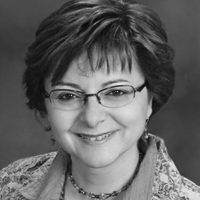Introduction
I will tell you that occupational therapy has made an incredibly impactful role in my family, in particular in some developmental assistance with one of my children. I have great admiration for your presentation. I hope that during this presentation, we can build a bridge. If you have questions about pharmacy, I would be glad to answer those as well.
You are likely to see a growing population of people over 65. One of the things that we will talk about today is that there really is not a magic cutoff. This age is often used in the literature to define two different populations of people, but we are going to learn that there is a lot more to it. You are not young at 64, and then you turn 65 and you are not. There are many factors to consider, especially when it comes to medications.
Geriatric Medication Use
Aging of America
Figure 1. Aging of America.
Look at how much growth there has been in this geriatric population. In particular, look at the people in the 75 to 84 year range. That is the sub-population of the country that is seeing the greatest growth in population. We have some very healthy seniors well passed the age of 80. As a society, and as a healthcare team, we need to make sure that we are able to help them maintain that great health status into a much more advanced stages than we saw in the past.
When talking to a patient about their medications, a lot of times we just say, "Fill out this form," or we already have a list, and we just verify that those listed are the medications they are taking. When you think about all of the medications and chemicals that someone can take, I think that this is worthy of exploration.
Generic Versus Brand Name
There are generic and brand name medicines. I am finding that more providers, especially within health systems, are using generic medications because medications over time will lose their brand patent. There will be competitors. Often you are talking about the same chemical entity even if multiple manufacturers make it. You use the generic name, as the brand name is specific to a particular manufacturer. A brand name is when a medication first comes on the market and usually that company maintains a patent for six, seven, or eight years. During this time, the medication is only marketed with its brand name. Once that patent expires, then multiple companies can make the same medication under the generic name. There have been occasions where a patient is taking the same medication twice, as one bottle is labeled with a generic name and other one with a brand name. This can be a source of overdosing or toxicity.
